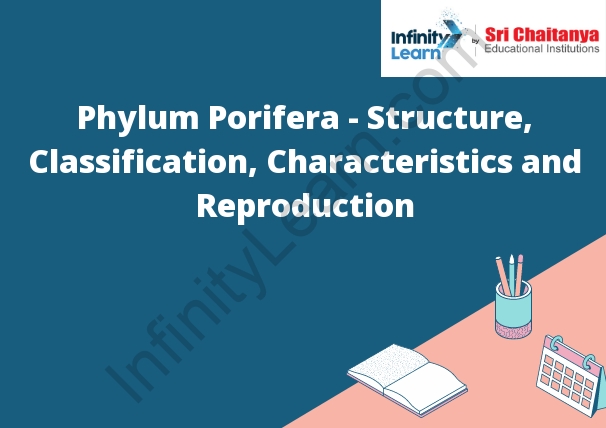Table of Contents
Introduction to Porifera
Porifera is an informal name for the phylum of animals that includes sponges. Poriferans are simple, sessile, aquatic animals that lack tissues and organs, and typically have a porous, spongy body. Their body plan is asymmetrical, with one end specialized for feeding and the other for reproduction. Poriferans are filter feeders, and use their spongy body to capture food particles from the water. They reproduce sexually, and the eggs and sperm are released into the water where they fertilize and develop into larvae.

Structure of Porifera
- A sponge is a simple animal that lives in the water. It has no bones, no brain, and no eyes. It does have a simple nervous system, and it can move if it wants to.
- A sponge made up of three layers of cells. The outer layer is called the epidermis. The middle layer called the mesohyl. The inner layer called the choanocytes.
- The epidermis is the layer of cells that covers the outside of the sponge. The epidermis is made up of cells called epithelial cells. The epithelial cells are covered in a thin layer of protein called collagen. The collagen helps the cells stick to each other.
- The mesohyl is the layer of cells that fills the inside of the sponge. The mesohyl is made up of cells called mesenchyme cells. The mesenchyme cells are covered in a thin layer of collagen. The collagen helps the cells stick to each other.
- The choanocytes are the cells that line the inside of the sponge. The choanocytes covered in a thin layer of collagen. The collagen helps the cells stick to each other. The choanocytes also covered in a thin layer of mucus. The mucus helps the cells catch food particles.
- The sponge has a simple nervous system. The nervous system consists of a nerve cord and a few nerve cells. The nerve cord runs down the center
Classification of Porifera
Porifera are a phylum of animals that include the sponges. There are about 5,000 species of sponges, most of which live in marine environments. Sponges have a simple body plan with a single layer of cells that covers a jelly-like matrix. They are filter feeders that extract food from the water that passes through their bodies.
Characteristics of Porifera
The characteristics of Porifera include:
- They are aquatic, and can found in both salt and fresh water.
- Porifera are filter feeders, and use their sponges to strain food particles from the water.
- They are generally sessile, meaning they do not move around.
- Porifera can be quite large, with some species reaching up to a meter in diameter.
- They are hermaphroditic, meaning they have both male and female reproductive organs.
- Porifera reproduce by releasing sperm and eggs into the water, and the eggs hatch into free-swimming larvae.
- They have no nervous system, and instead rely on diffusion to transmit information between cells.
- Porifera are generally quite simple creatures, with a basic body plan and a limited range of functions.
Reproduction in Porifera
Porifera are aquatic animals that reproduce sexually and asexually.
- Sexual reproduction in Porifera involves the production of sperm and eggs. Sperm produced in the male sex organs, called spermatozoa, and eggs produced in the female sex organs, called ova. Sperm and eggs released into the water and they fertilize each other to produce a new individual.
- Asexual reproduction in Porifera involves the production of a new individual by a process called budding. A small piece of the body of the parent animal breaks off and develops into a new individual.









